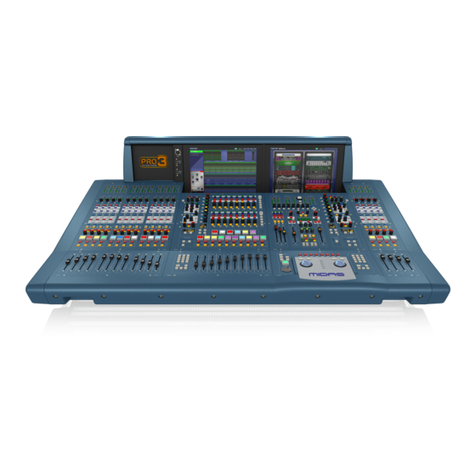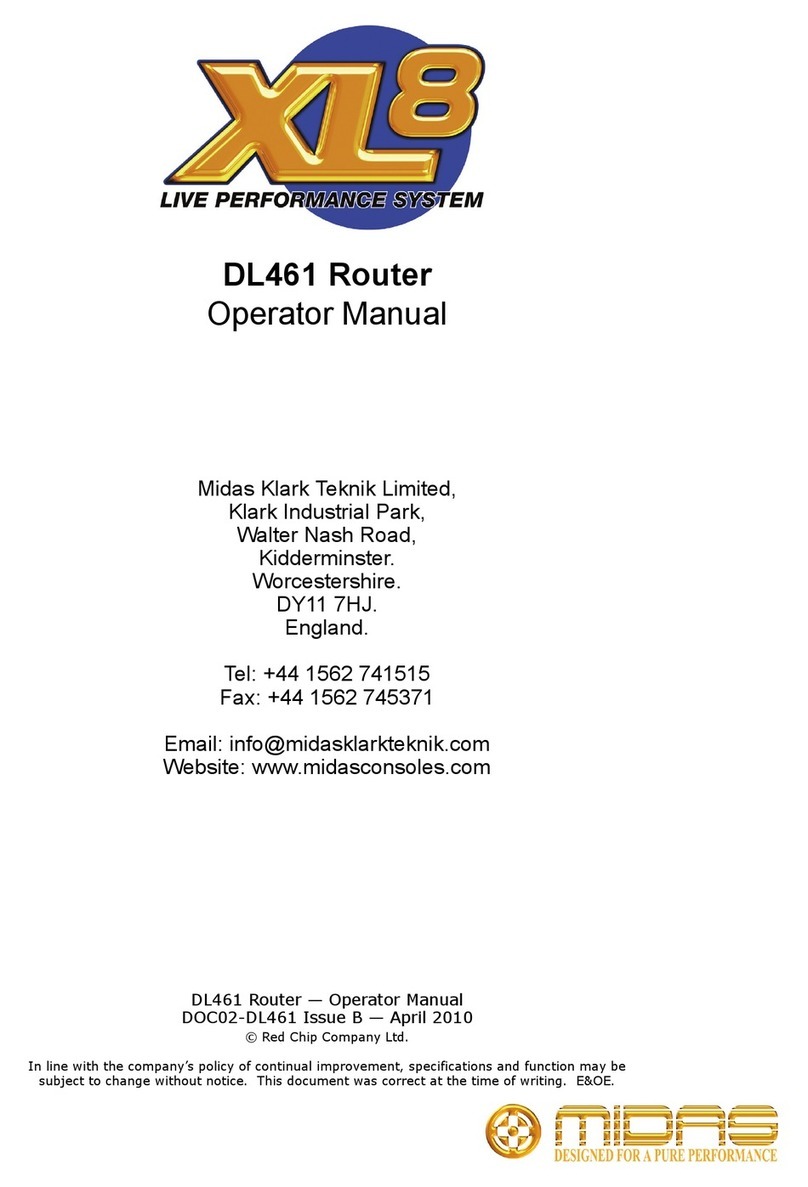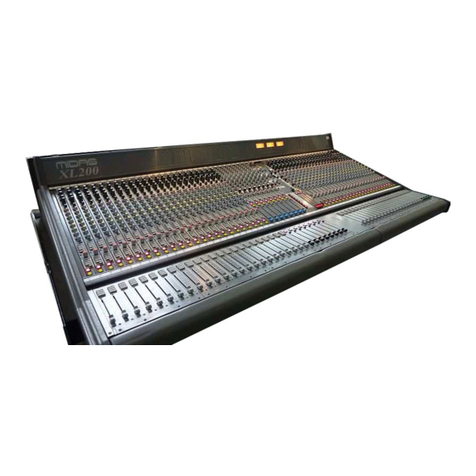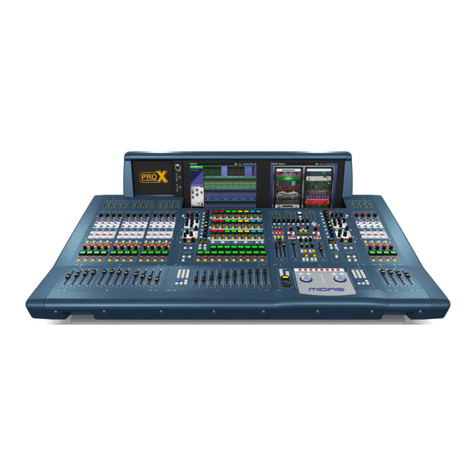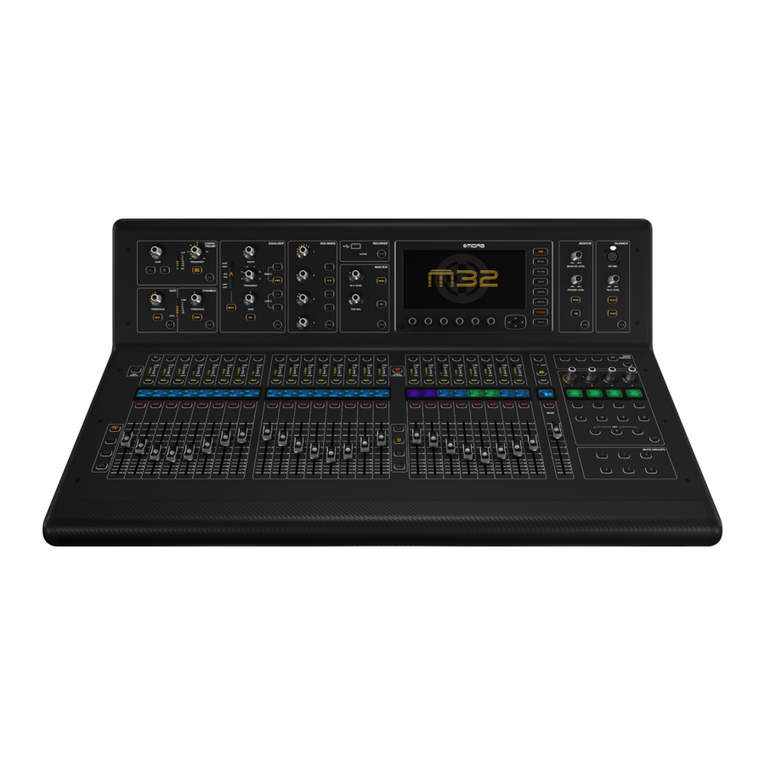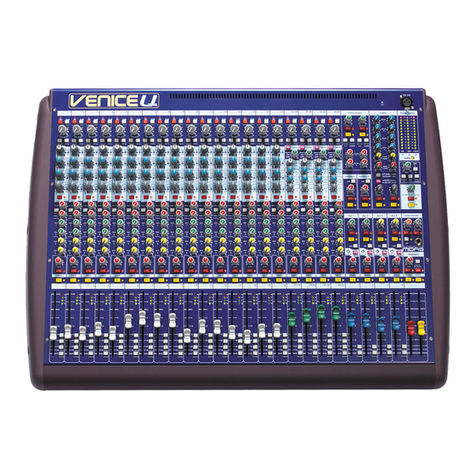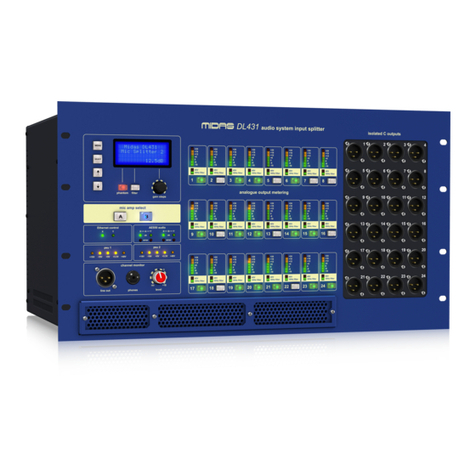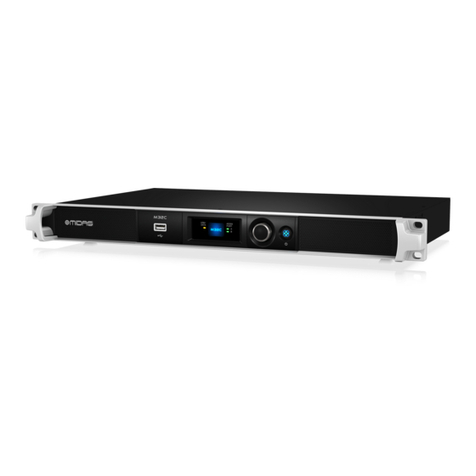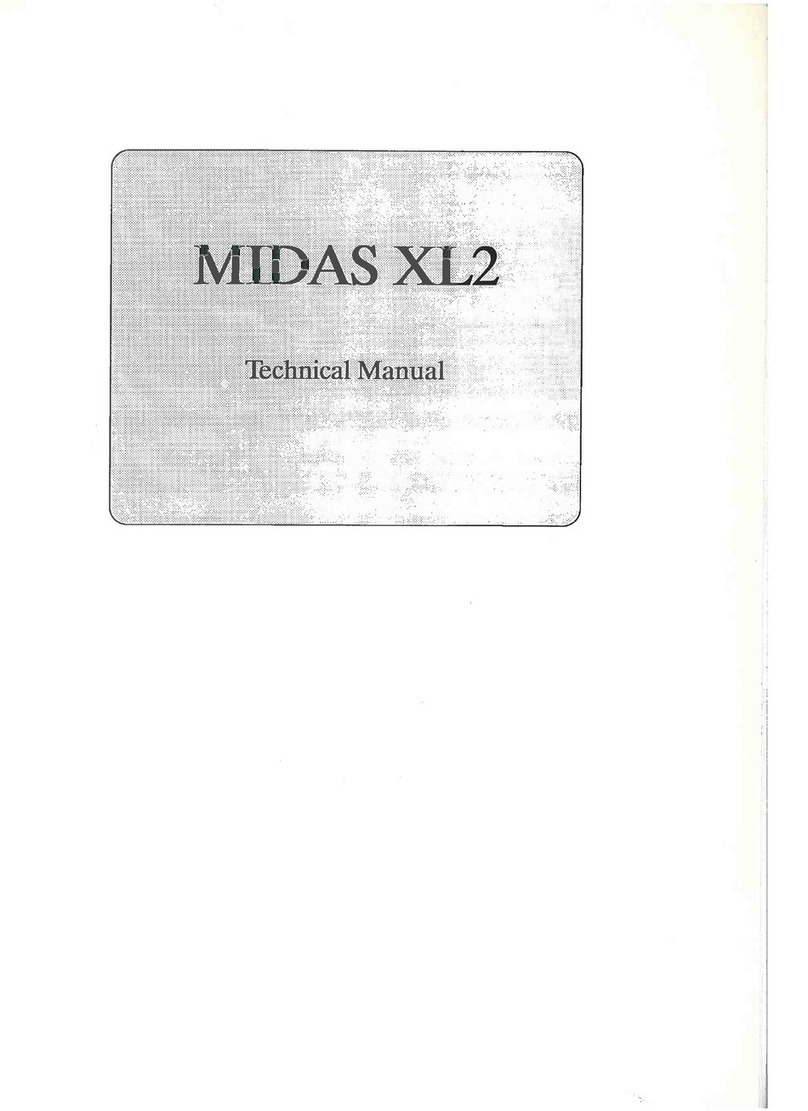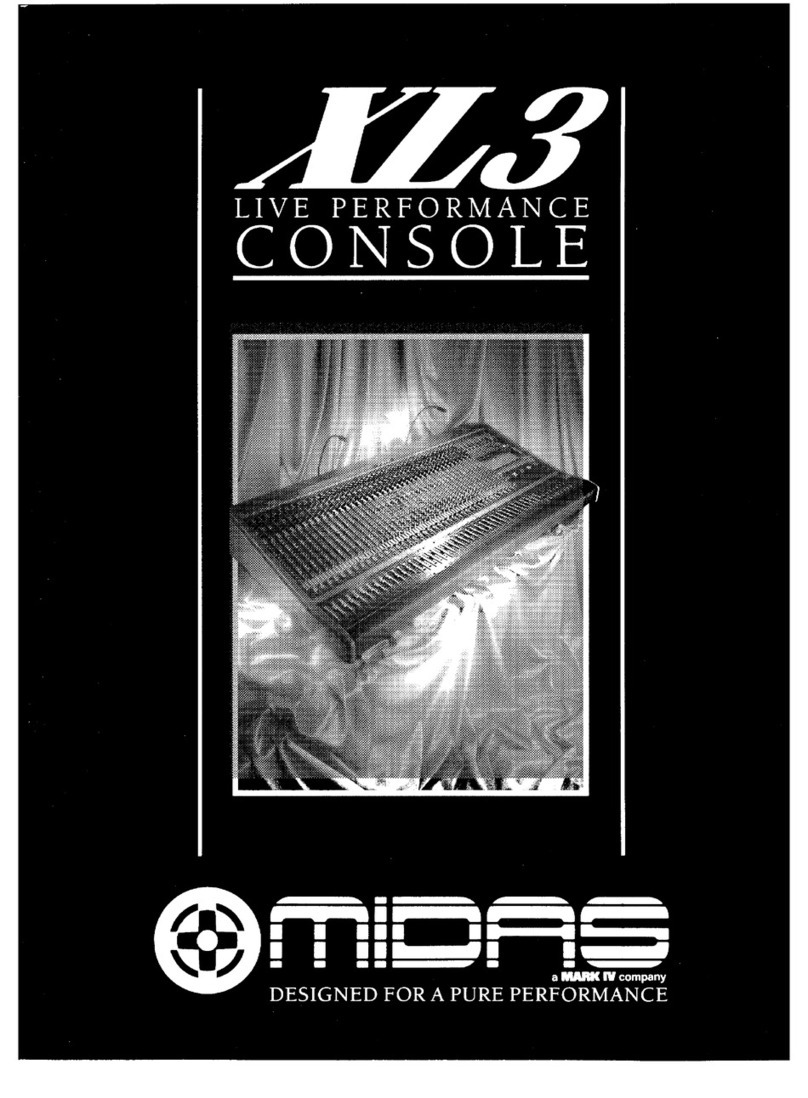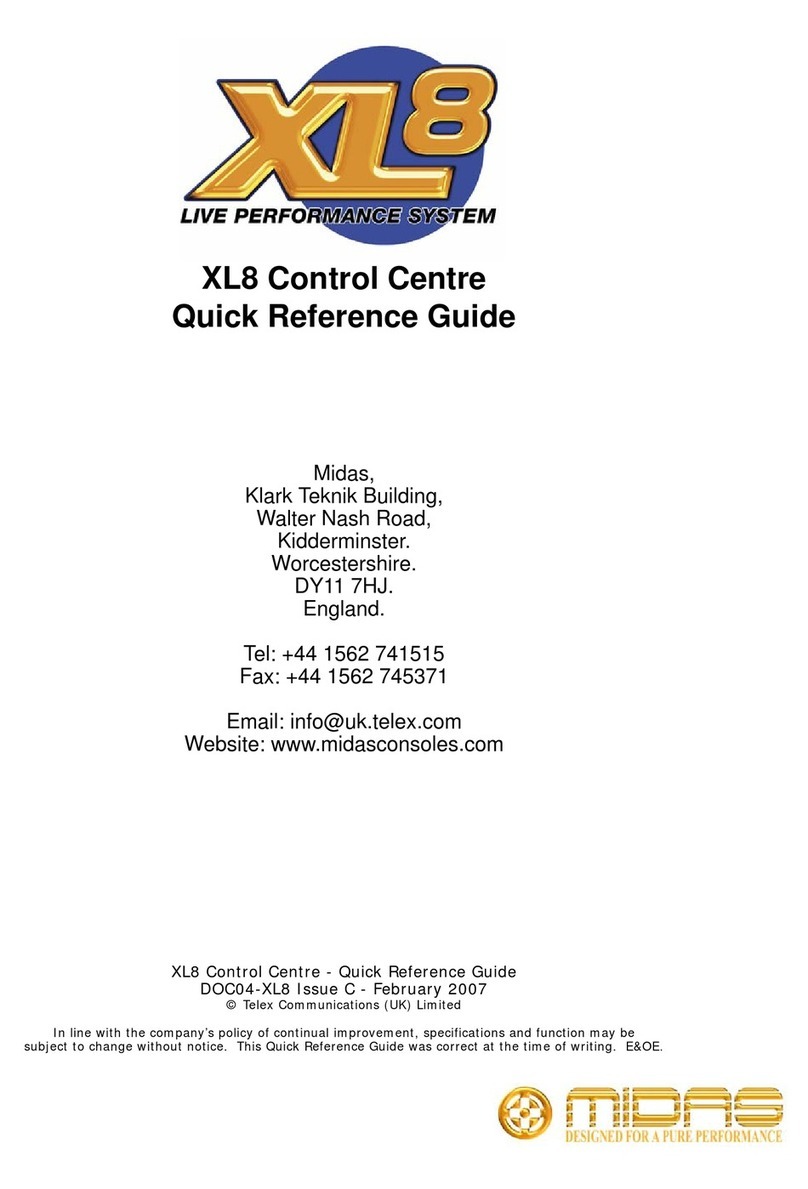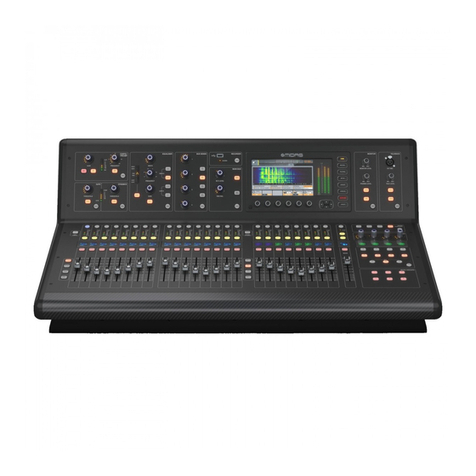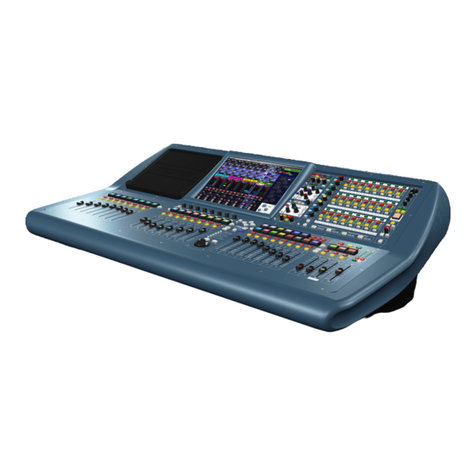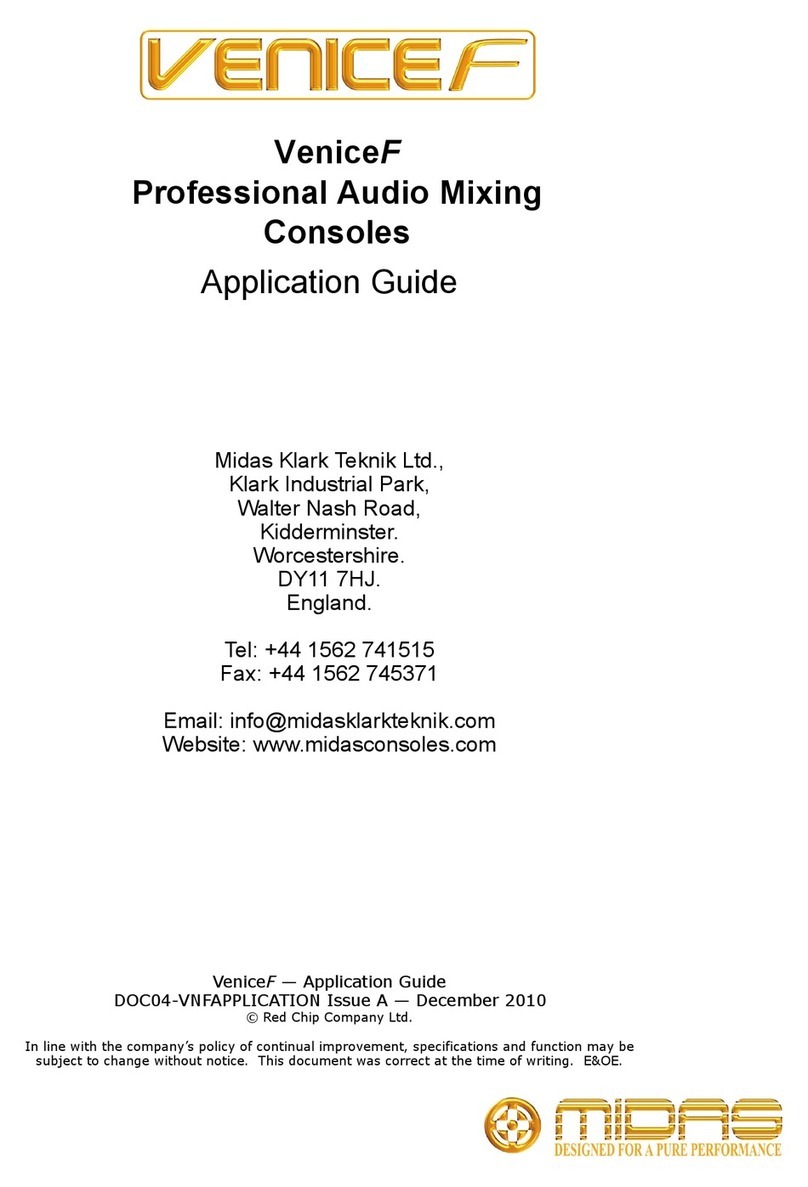The 48V switch connects 48 volt phantom
power to the input connector which is
suitable for a condenser microphone
or DI box.
15
15
0
hi-mid
freq
400
2k
8k
Q
+/-
bell
freq
1k
5k
20k
15
15
0
treble
+60
+25 +35
+15 gain
direct o/p
0
+10
48V
PAD
O
PRE
PRE
INS
EQ
The PAD switch gives 25dB of
attenuation to the input signal which will
allow the connection of high output
microphones or line level signals. If the
input amplifier is transformer coupled
(option) the pad greatly reduces the risk
of saturation at very low frequencies.
The PHASE switch activates a 180
degrees phase change within the input
amplifier.
The GAIN control gives continuous
adjustment of the input amplifier
gain from + 15dB to + 60dB.
The PRE switch re configures the direct
output to derive signal from the input
channel pre insert and equaliser. It is
important to note that pre insert direct
outputs are also pre mute.
The treble FREQ control gives
continuous adjustment of the frequency
range that the treble equaliser acts on
from 1k to 20k.
The TREBLE (dual concentric top)
control gives continuous adjustment of
boost and cut from + 15dB to - 15dB with
a 0dB centre detent.
The treble WIDTH (dual concentric
bottom) control gives continuous
adjustment of bandwidth from 0.1 to 2
octaves with a 0.5 octave centre detent.
This only operates when the BELL switch
is activated.
The treble BELL switch converts the
treble equaliser from traditional MIDAS
shelving response to full parametric
operation.
The hi mid FREQ control gives
continuous adjustment of the frequency
range that the hi mid equaliser acts on
from 400Hz to 8k.
The HI MID (dual concentric top) control
gives continuous adjustment of boost and
cut from + 15dB to - 15dB with a 0dB
centre detent.
The hi mid WIDTH (dual concentric
bottom) control gives continuous
adjustment of bandwidth from 0.1 to 2
octaves with a 0.5 octave centre detent.
The INS switch connects the input insert
return signal to the input channel signal
path. The insert PRE switch arranges the input
channel signal to pass through the insert
point before the equaliser when activated
and after the insert point when not
activated.
The EQ switch connects the equaliser
into the input channel signal path.
The DIRECT output control gives
continuous adjustment of the direct output
level from + 10dB to off. The output is
derived from the input channel post
equaliser pre fader signal.


